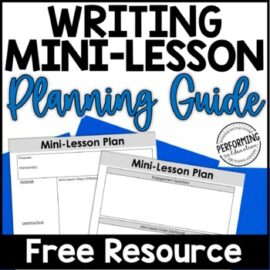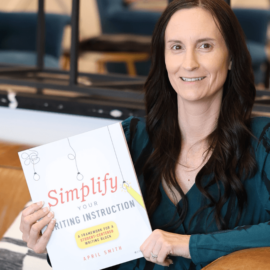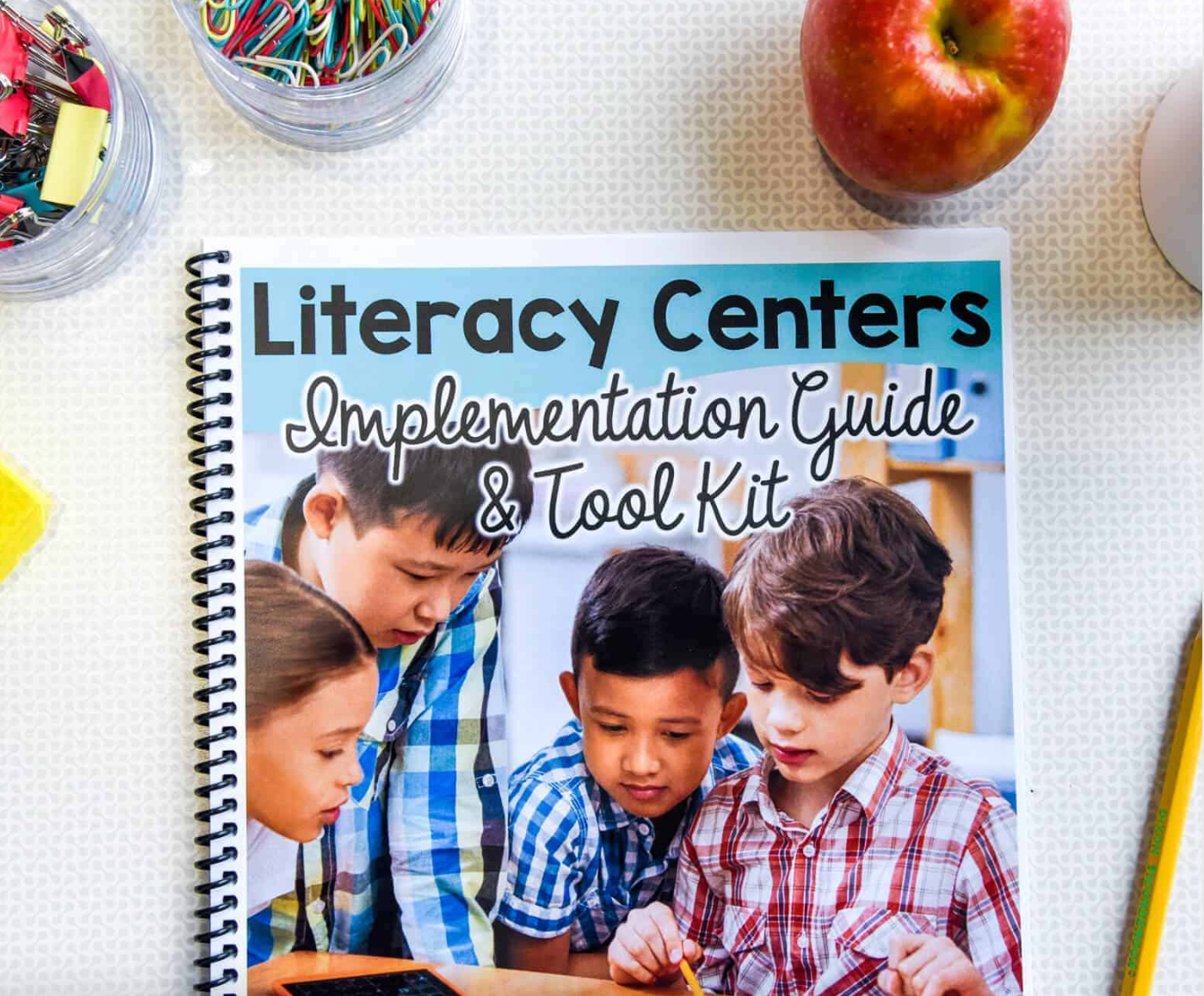How often have we gotten a writing curriculum without enough time to implement it in the classroom? I feel like writing has become less prioritized each year. It’s gotten to the point where they even forget to include it in our schedule. They bulk it in with the ELA block, but in reality, they want us to teach reading during that time. This is where a writer’s workshop can help.
One of the key things I’ve taken away from meetings with administrators lately is they want us to incorporate writing into other subject areas. This seems like a great idea because writing naturally happens in every subject area. However, we can’t teach writing skills unless we do lessons on writing. So, even if we’re incorporating it into other subject areas, we need time to do actual lessons.
You’re probably not going to convince your district to give you more time dedicated to writing. I’ve heard from many teachers that they only have 30-minutes to teach writing. So, here is how I plan and implement a 30-minute writer’s workshop in the classroom.
Overview of a 30-Minute Writer’s Workshop
10-15 minute mini-lesson
It’s better to stay at the 10-minute mark for your mini-lesson to allow for transition time during your writer’s workshops. During these lessons, you only want to focus on one skill. For example, suppose you’re covering an introduction paragraph. In that case, it’s not enough time to teach how to write a lead, thesis, and connecting sentences. Instead, you need to split them into one day for each of those three parts.
It will take a long time to cover complete lessons, but that’s okay because getting those skills learned and applied is the priority.
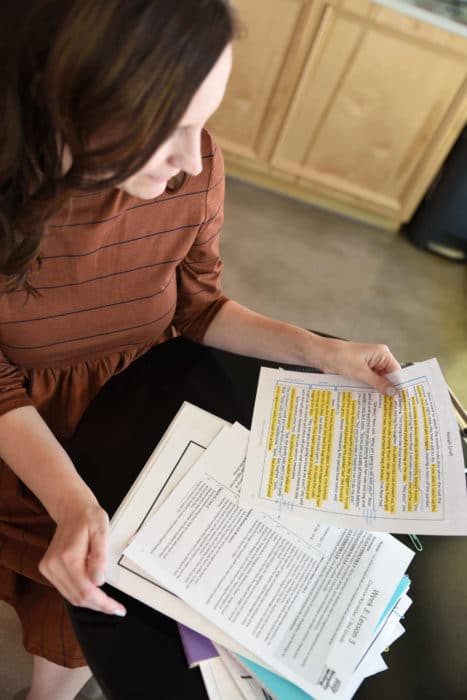
Tips for your mini-lesson
10-15 minutes is a short amount of time, so having a few rules is essential.
- No note-taking: Students shouldn’t be taking notes because it’s time-consuming and frustrating for some students. Instead, they should be actively participating in your model.
- No hand-raising: Students are not raising their hands to ask individual questions. Instead, students will save their questions for the student writing time.
- No interruptions: Students should not be interrupting the lesson for any reason. Everything that happens during this time is key, so you must be able to stick to the plan.
If you want more information about keeping students engaged during a 15-minute writing mini-lesson, read my blog post Writer’s Workshop Made Simple: How to Easily Plan and Teach Writing Mini-Lessons.
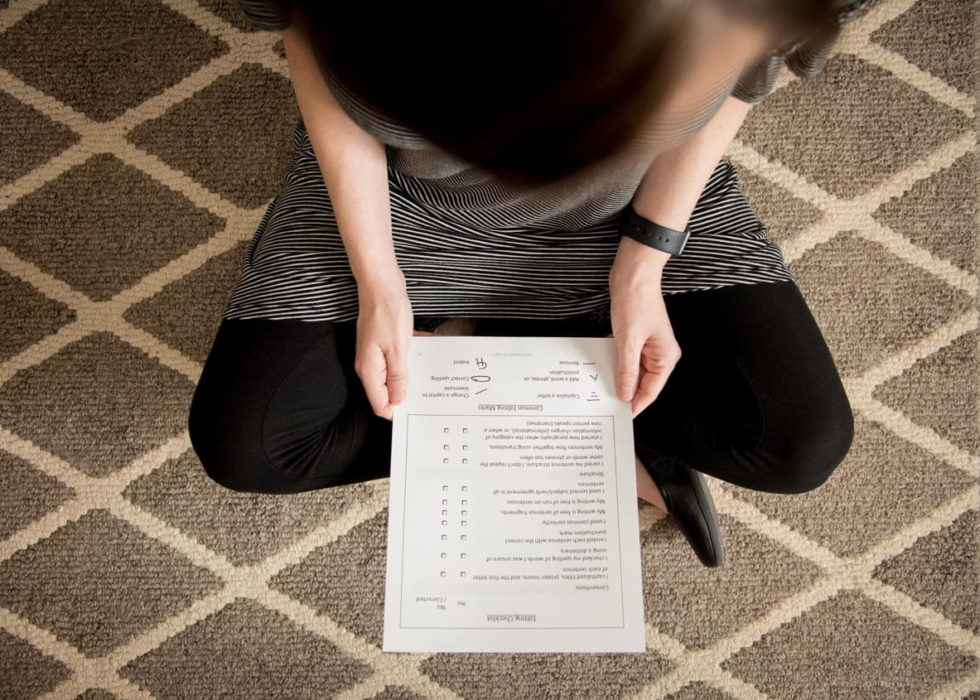
Do prep work before the lesson begins
I do all the prep work for the writing mini-lesson before the students are with me.
For example, suppose I’m going to do a character development brainstorm with them. In that case, I print the character image and paste it on the board. I’m not an artist, so I don’t spend time trying to draw pictures. However, if you’re an artist, do your drawings before the lesson begins. I will also write the mini-lesson title on the board and draw the brainstorm lines out, so they are ready. I also like to have some examples and ideas preplanned to help lead students when needed.
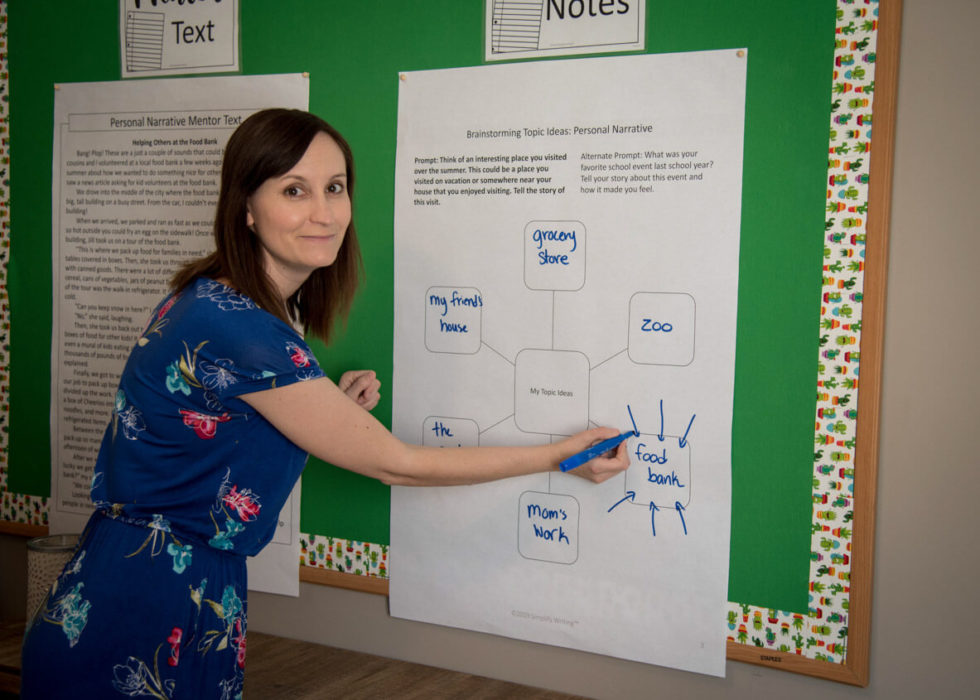
10-12 minute student writing time
10-12 minutes is not very long, which is why it’s so important you have a very short mini-lesson that only covers one small skill. This time frame isn’t enough time for most students to write an introductory paragraph well. However, it is enough time for them to come up with ideas for leads and choose one.
When you get to the upper grades, you might be able to do more in this time frame. However, these skills need to be split up for 2nd, 3rd, and 4th graders.
If you have less time in your mini-lesson, you can leave more time for the student writing time. My preference is for the mini-lesson to be shorter and the student writing time to be longer.

Transition time
It’s important to remember that there is a transition time between the mini-lesson and student writing time. Transition time is tight when you do 30-minute writer’s workshops. If students are moving desks or getting supplies, you need to have a system in place.
I like to have everything organized in writing folders, which we collect at the end of writing time. That way, no student spends the first five minutes of the lesson searching for their writing. Then, before we start the mini-lesson, those folders get passed out. Students have the correct supplies on their desks, and we go straight into the lesson. This allows us to transition into student writing in less than one minute.
1-2 minute closure
The closure is a small portion of time where you review what you did for the day. Unfortunately, there isn’t enough time for students to share examples, but you summarize what you worked on for the day. You also share what you will focus on in the next mini-lesson. Finally, students will clean up and transition to the next subject area.
Tips for Including Grammar in Writing Mini-Lessons
I’m often asked how to teach grammar in a 30-minute lesson. First, it helps to incorporate grammar naturally. For example, have students identify where punctuation goes as part of each lesson for a week. Then, you can use 1-3 examples, so it fits into the short lesson.
You can also plan your grammar lessons in-between units. Or, if students are really struggling with something, in particular, take a break from the writing process and do a grammar mini-lesson. Then, have them directly use that in their writing process over the next few days so they get practice applying it. It’s okay to substitute a lesson for grammar if it’s necessary.
What if you can’t do a 30-minute writer’s workshop?
If a 30-minute writing block doesn’t work for you and your students, that’s fine. In the past, there have been times when I’ll split my 90-minute ELA block, so writing gets 50-minutes three times a week and reading gets more time on the other two days.
For example, Tuesday and Thursday would be all reading, and there is less reading on the other three days. It equals the same amount of time for writing vs. reading, just using more of a block schedule. This can help give the students extra time to work on their writing pieces, and it can feel more relaxing than doing a 30-minute writing block.
Tell me in the comments how much time you have to teach writing each day. I’m curious to hear about the struggles and situations you’re dealing with, so I can continue to tailor my blog posts to you.
